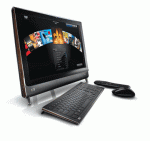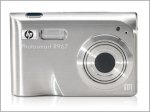On April 28, 2010, Palm, Inc. and Hewlett-Packard announced that HP would be acquiring Palm for $1.2 billion in cash and debt. In the months leading up to the buyout, it was rumored that Palm was going to be purchased by either HTC, Dell, RIM or HP.
On August 6, 2010, CEO Mark Hurd resigned amid controversy and CFO Cathie Lesjak assumed the role of interim CEO. On September 30, 2010, Léo Apotheker was named as HP’s new CEO and President. Apotheker’s appointment sparked a strong reaction from Oracle chief executive Larry Ellison, who complained that Apotheker had been in charge of SAP when one of its subsidiaries was systematically stealing software from Oracle. SAP accepted that its subsidiary, which has now closed, illegally accessed Oracle intellectual property.
On August 18, 2011, HP announced that it would strategically exit the smartphone and tablet computer business, focusing on higher-margin “strategic priorities of Cloud, solutions and software with an emphasis on enterprise, commercial and government markets”. Continue reading



















